In the 1950s, the communist government led Hungary into large-scale forced industrialisation. The economy's controlled restructuring freed up many agricultural labourers, and large socialist factories absorbed this workforce. This meant these workers needed a home. At the time, housing was seen as a task of the state, and flats were distributed based on the merits of workers. However, Budapest had few flats before the process began, and those standing were in terrible conditions.
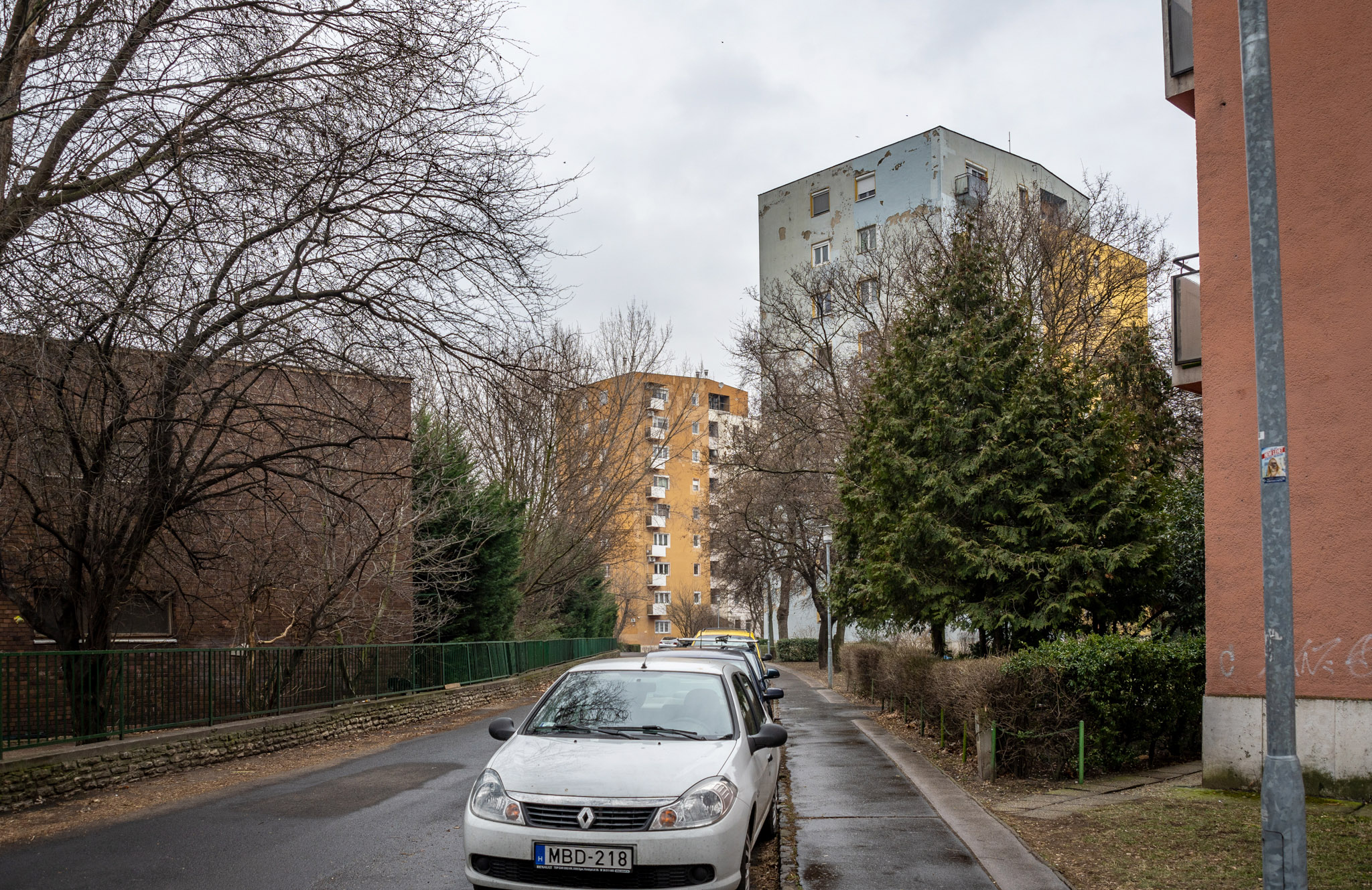
The József Attila housing estate today (Photo: Both Balázs/pestbuda.hu)
The solution to the dual task of providing housing for workers as a public investment, excluding the market, was deemed to be centrally planned housing construction by the communist leadership, prioritising quick construction and economical solutions. The situation is well illustrated by the fact that 120,000 housing requests were unresolved in Budapest in 1960.
This led to large scale industrial housing development at the end of the 1950s, beginning of the sixties.
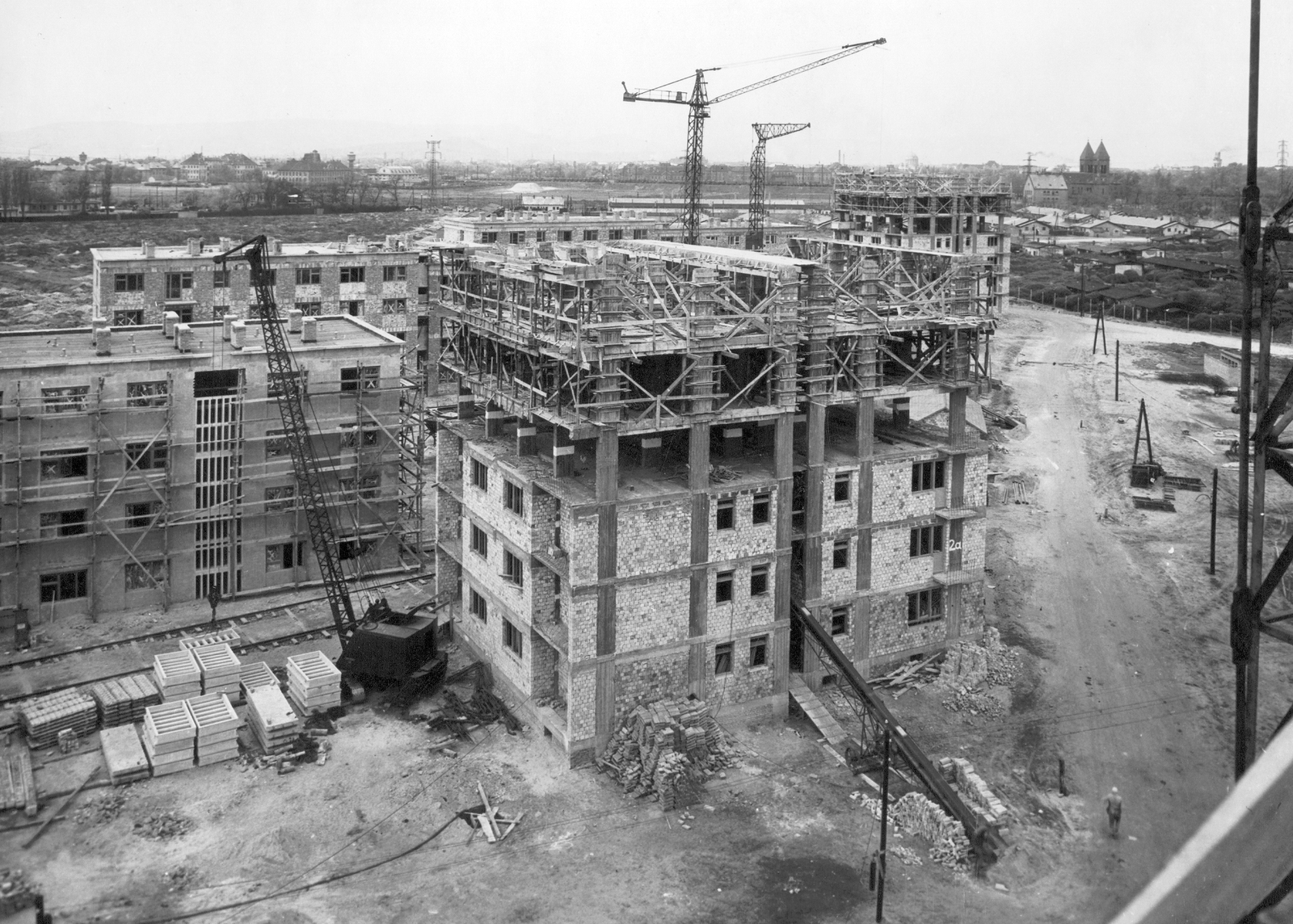
The past: reinforced concrete frame, but brick walls. House construction later: the József Attila Housing Estate in 1959 (Photo: Fortepan / Image ID: 25801)
Urban developers of the time were "lucky", as the Big Brother, the Soviet Union, led the way in large block-based prefabricated models. Naturally, the technology did not come out of the Soviet Union. The methodology was developed in the West. In fact, a building-prefabrication factory based on Danish technology once stood in Hungary.
However, in 1960, true pre-fabrication was yet to come. First, locally pre-assembled elements were the solution. On 17 August 1960, Esti Hírlap announced:
“An important meeting was recently held at the Budapest Construction Development Company regarding the construction of the housing estate on Üllői Road. A large-panel foamed slag aggregate concrete workshop will be built next to the estate. The plant will fabricate the building elements for the housing estate on Üllői Road, completing the structure of 800–1000 flats per year. From now on, the Üllői Road housing estate will be built with modern technology, and the houses will be assembled from large blocks foamed slag aggregate concrete.”
A huge, new type of residential area was planned in the 1950s along Üllői Road, on the former horse racing course and the site of Mária Valéria-Telep. Construction began in the 1950s with the technology of the time, which was deemed too slow and inefficient by the 1960s.
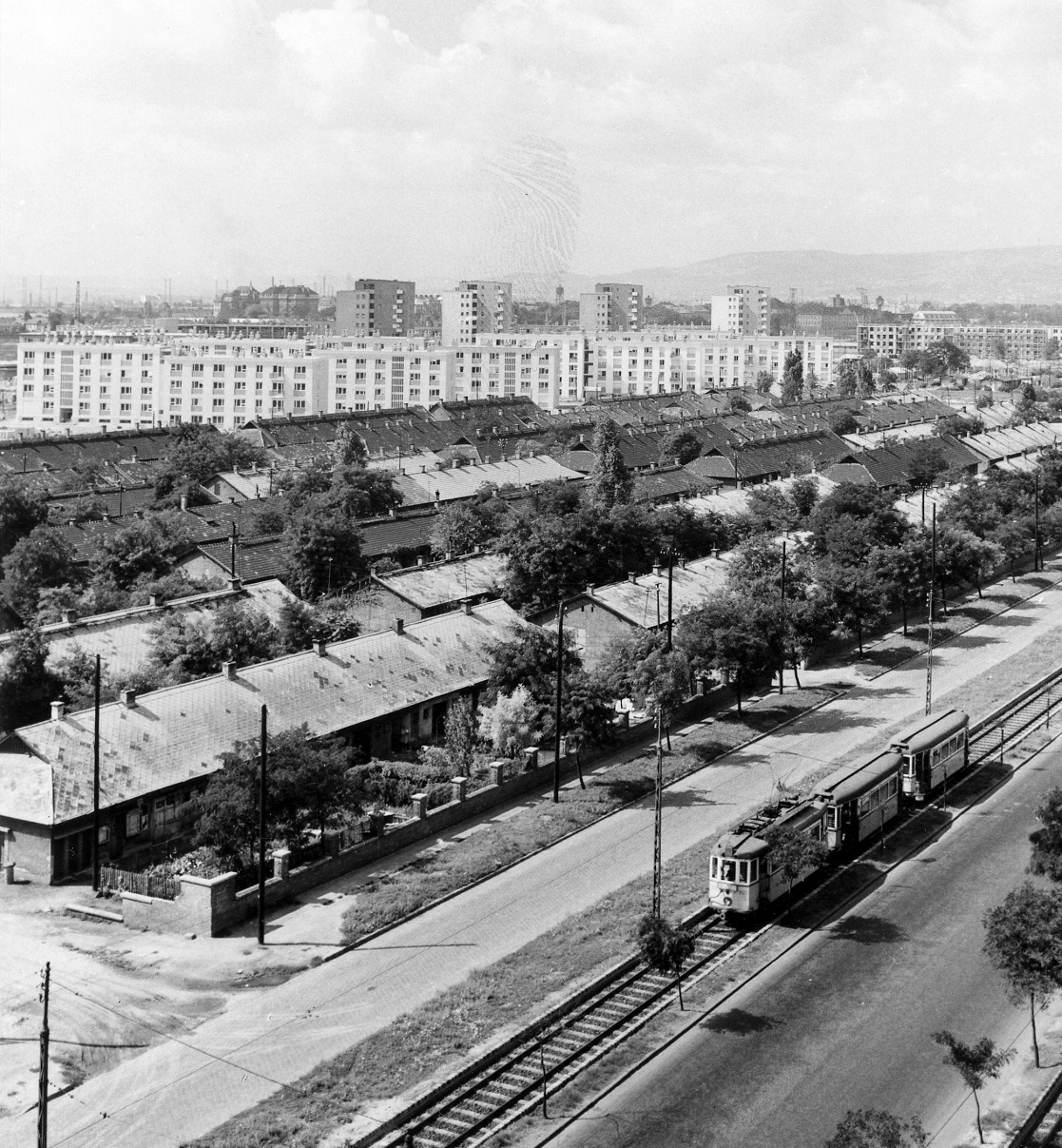
The age of transition: in the foreground, the single-storey houses of Mária Valéria-Telep in the foreground, and the modern buildings of the József Attila housing estate in the background, 1964 (Photo: Fortepan /No.: 103828)
The first pane building in Budapest was built on Üllői Road within today's József Attila housing estate. The building was not built using prefabricated housing factories, which appeared about half a decade later but made out of large blocks prefabricated on the construction site. But why use slag? This metallurgical by-product was intended to replace gravel in concrete and was perfectly suited to this goal.
A few months later, Magyar Nemzet reported the following on 17 February 1961, sixty years ago:
“Based on an idea put forward by three engineers of Construction Company No. 44, 4 new 8-storey tower blocks will be built in the Üllői Road housing estate. Instead of the previously used reinforced concrete frames, the main walls will be made of cast concrete, room-sized panels will be lifted through the building's facade, and each room is covered with a single, prefabricated element.
The builders started assembling the wall elements in August, and the first building was completed a few days ago, while all others are currently on the eighth floor."
This was not the first panel-based, foamed slag aggregate concrete house in the country. That title belongs to a building completed in Dunaújváros in January 1960.
The article about the completion of the tower block in Budapest highlighted that the four high-rise building had been completed in 10 months instead of the previous 14 months.
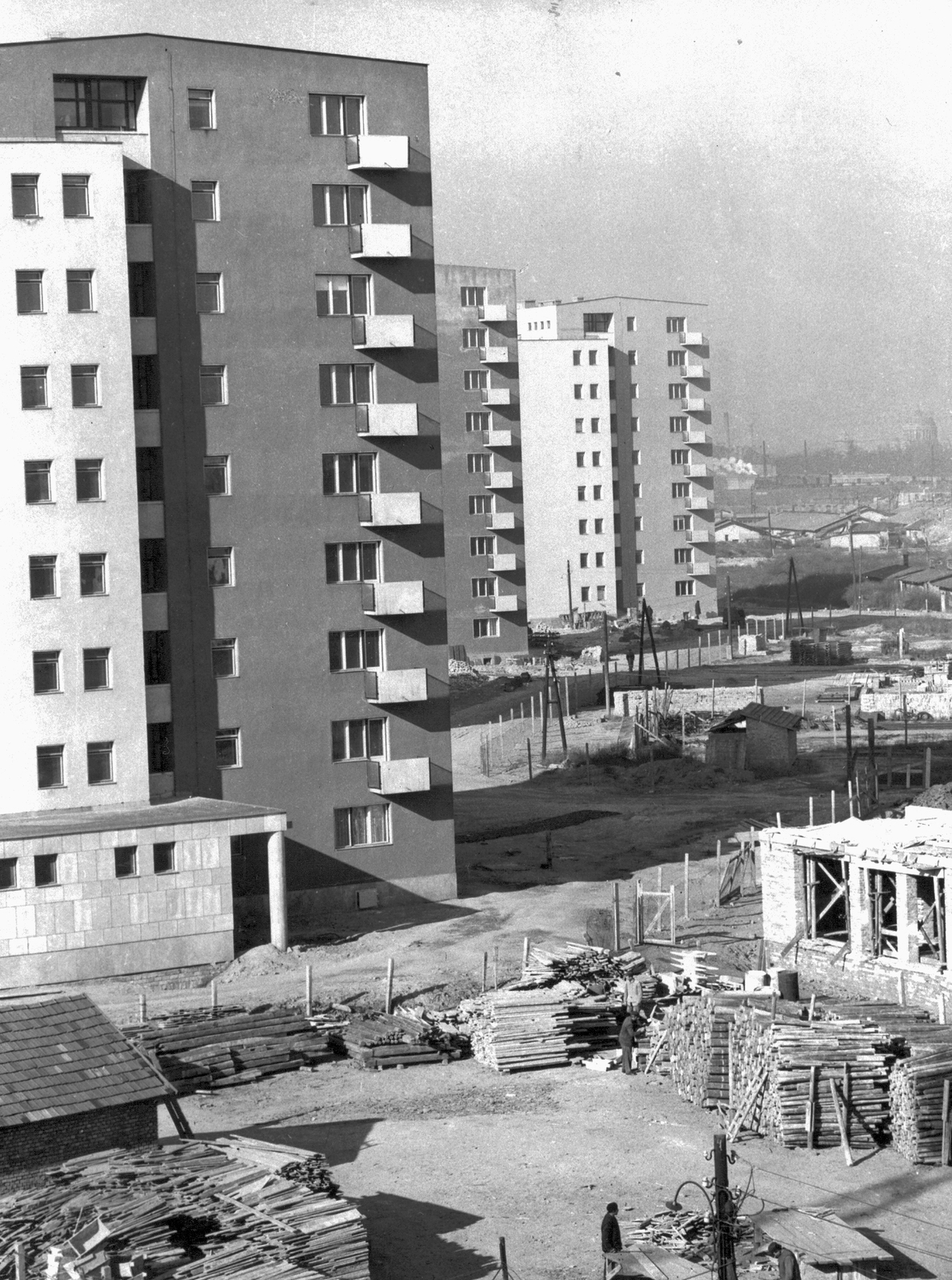
Yet, the first prefabricated buildings are completely different from later house factory buildings. Construction in 1960 (Photo: Fortepan/Image No.: 25803)
But what was the difference? According to the procedure developed by Tibor Csermák, Mihály Heincz and István Pethő, room-sized panel structures were built in a workshop on the construction site. These panels had a structural thickness of 20, of which 3 cm was the outer reinforced concrete slab, and the inner 17 cm was perlite concrete. The buildings were assembled from these elements on-site within the workshop. Thus the buildings were not yet put together from element made in the large central housing factories. The first “house-factory” panel house was completed five years later.
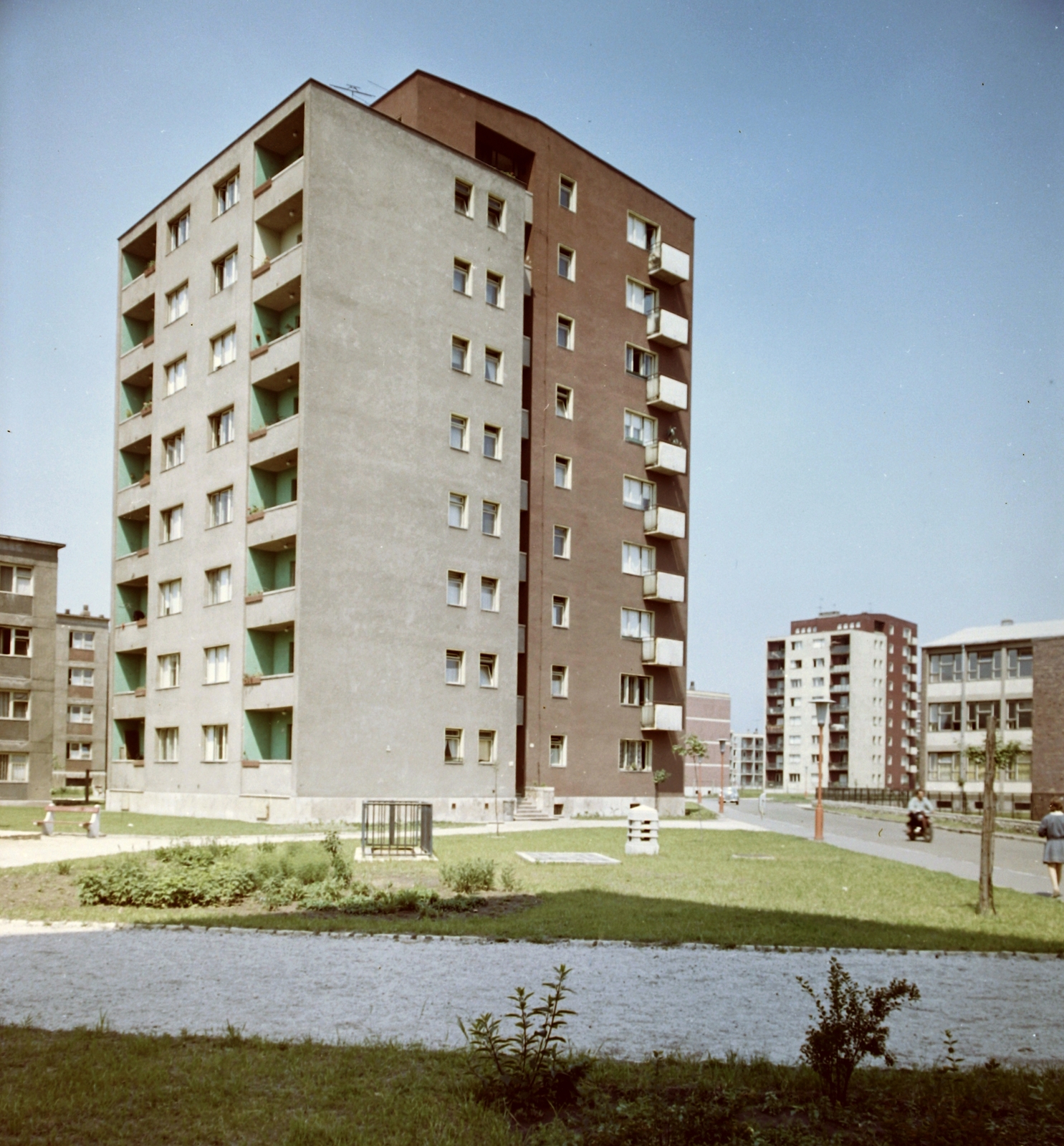
The grass had grown on Hurok Street by 1963 (Photo: Fortepan/Image No.: 28799)
According to calculations, a flat in the houses erected with the new technology was up to 10 thousand HUF (at the value of the time) cheaper than the cost of a flat built with the old approach.
However, not everything was perfect in the buildings. It was not the design itself or the structure that was at fault, but the quality of workmanship. Insulation and painting defects soon appeared, and the plastic door handles broke quickly. The problems were so widespread that the Budapest City Council Executive Council dealt with the problems in 1963. Residents also complained that there were not enough nurseries or shops nearby. The errors were fixed, and the houses have been standing ever since. Later, however, an even more economical construction method was established. Buildings were built with the new technology around the country, including the József Attila housing estate.
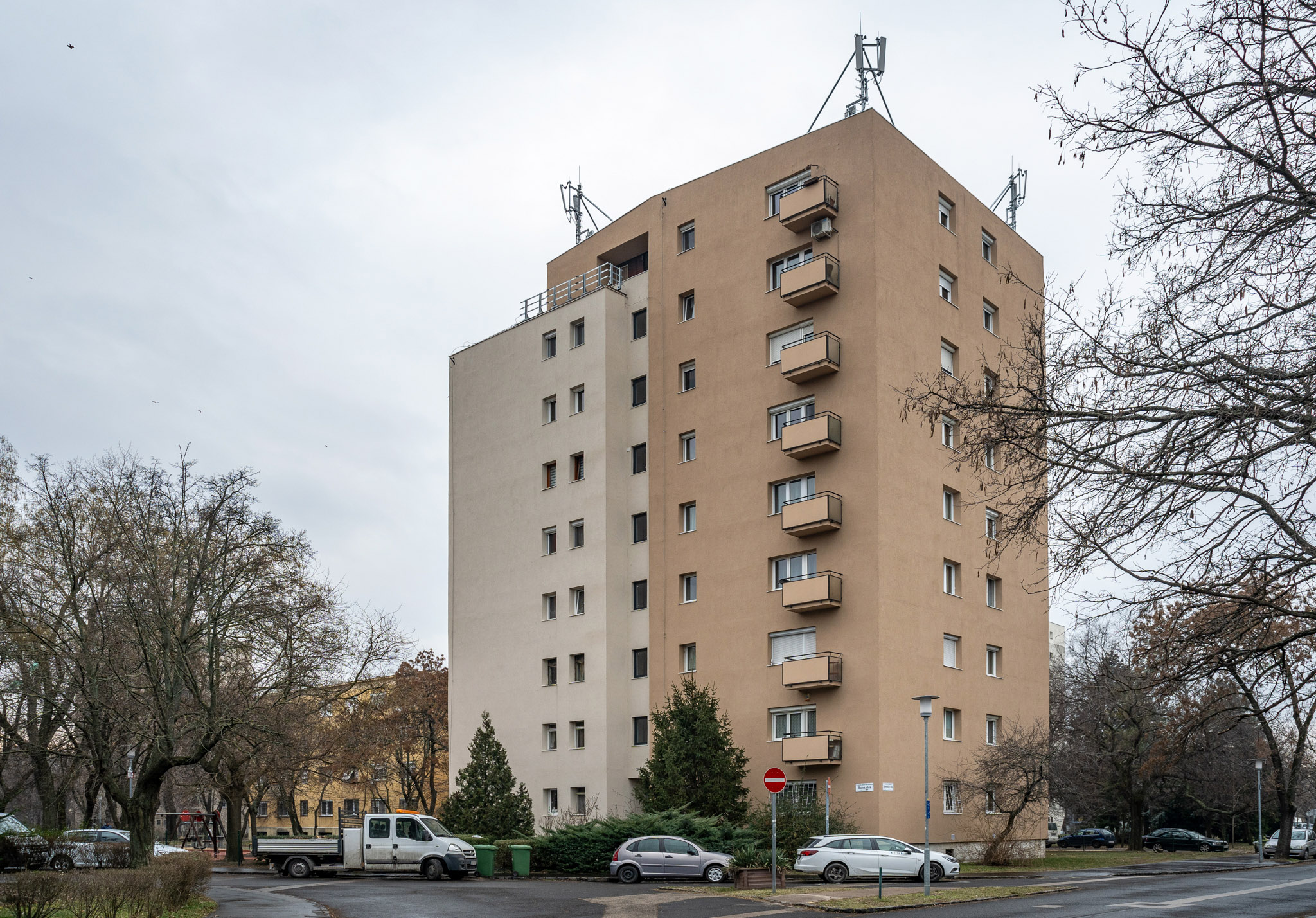
Today tall trees surround the buildings (Photo: Balázs Both/pestbuda.hu )
The last buildings in the carefully designed József Attila Housing Estate, one of Budapest's greenest housing estates, were completed in 1980, using full-blown prefabricated housing factory technology. Thus the area is a museum of architecture as buildings from the 1950s to the heyday of panel construction can be found through the estate.
Cover photo: Bird's eye view of the József Attila Housing Estate looking towards Üllői Road, 1968 (Photo: Fortepan/No.: 25806)

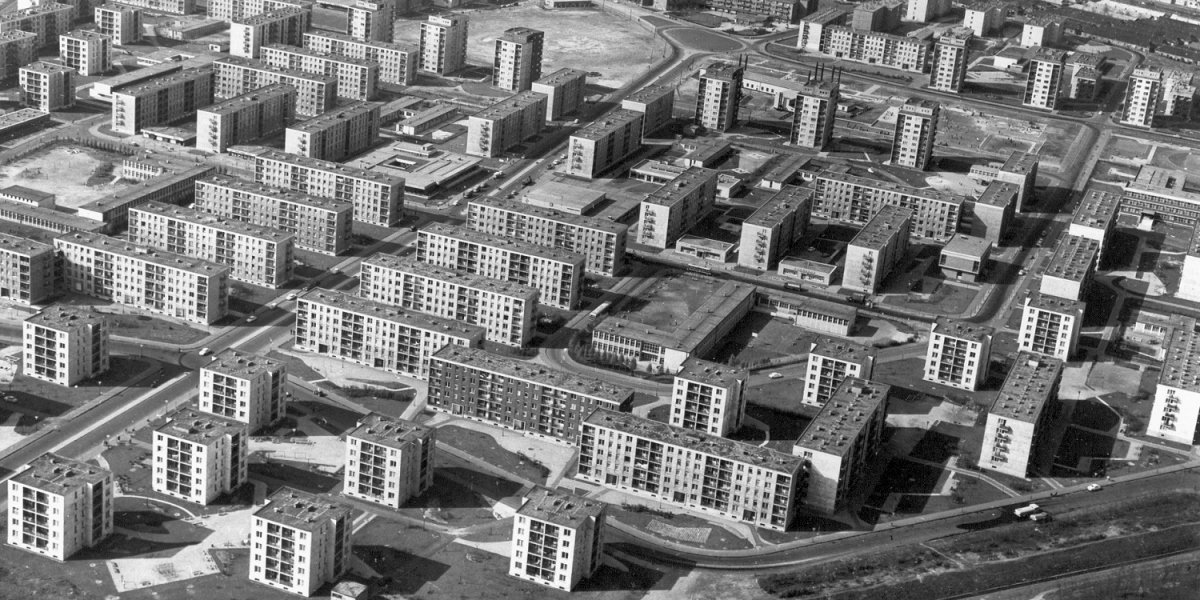







Hozzászólások
Log in or register to comment!
Login Registration